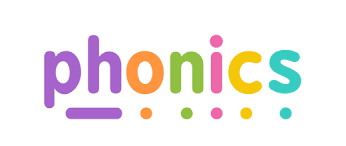Phonics at St Barnabas Primary School

At St Barnabas CE Primary School it is our intent that children access a daily phonics lesson that teaches them how to read and spell rapidly so that they can read fluently and know how to spell high frequency words and apply these in their writing by the end of Key Stage 1.
Children in Reception and Key Stage 1 follow the synthetic phonics approach, using the Twinkl Phonics programme. It’s an approach to teaching phonics in which individual letters or letter sounds are blended to form groups of letters or sounds, and those groups are then blended to form complete words – we’ve produced a guide to help you with some of the terms and concepts (see link at bottom of the page).
We use a combination of reading schemes. These include Rhino readers, Oxford Reading Tree and Big Cat. These give a variety of fiction and non–fiction books to develop children’s reading range. Children learn to read at different rates. In Reception and Key Stage 1 children have reading books that match the phonics they are learning in school.
Our daily phonics sessions are fun, involving lots of speaking, listening and games. The emphasis is on children’s active participation. They learn to use their phonic knowledge for reading and writing activities and in their independent play.
Twinkl phonics is divided into six levels, with each level or phase building on the skills and knowledge of previous learning. There are no big leaps in learning. Children have time to practise and rapidly expand their ability to read and spell words. They are also taught to read and spell ‘tricky words’ – words with spellings that are unusual or that children have not yet been taught. These include the words ‘to’, ‘was’, ‘said’ and ‘the’ – you can’t really break the sounds down for such words so it’s better to just ‘recognise’ them.
At the end of Year 1 children undertake the Phonics Screening check which is a government assessment that checks if children can read real and nonsense words.

First of all, what is synthetic phonics?
It is a technical name and nothing to do with being artificial. The synthetic part refers to synthesizing or blending sounds to make a word. Phonics is a method of teaching children how spoken words are composed of sounds called phonemes and how the letters in words correspond to those phonemes. The process of reading involves decoding or ‘breaking’ words into separate phonemes, so that meaning can be gained. On the other hand, the process of spelling requires the writer to identify all the phonemes in a word and then use their knowledge of the phonemic code to write or ‘make’ the word.
English is essentially a code that can be encoded (written) and decoded (read). We need to teach children this code with as much emphasis as possible on the rules and regularities of the written language. Children are taught that we can make a word from the sounds and then break it apart again when we want to spell it. Spelling and reading are taught together but children’s may be better at reading before spelling or vice versa.
Written English is recognised as being a complex language. We have 26 letters but 44 phonemes in the spoken language. There are a huge number of letter combinations needed to make these 44 phonemes (a phoneme is the technical name for the smallest unit of sound).
